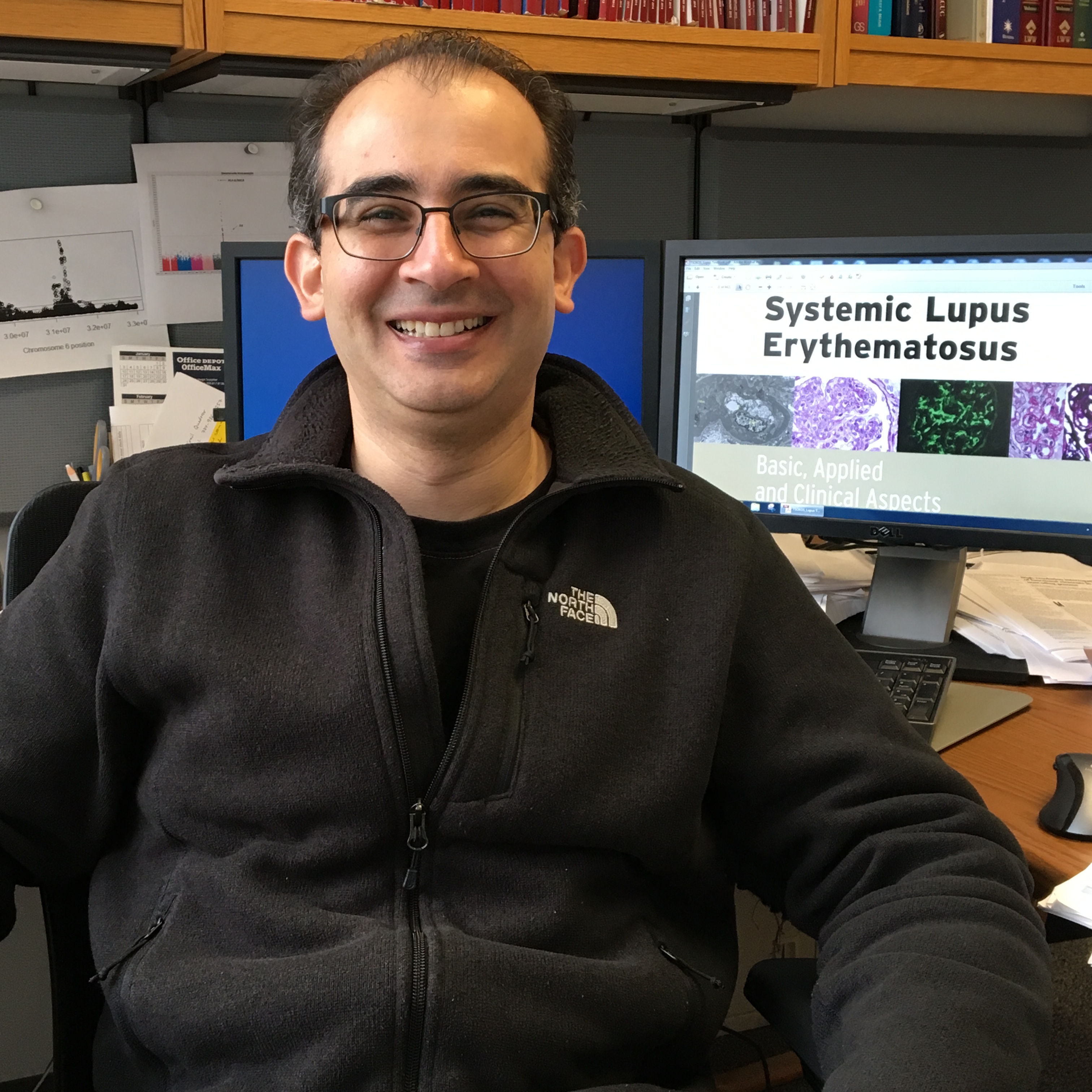Targeting EZH2 in lupus
General Audience Summary
Dr. Sawalha discovered that the DNA of particular immune cells (CD4+ T cells) changes in people with lupus as the disease progresses. In a process called “methylation,” new molecules are added to the DNA like ornaments hung on a Christmas tree. Methylation of the DNA changes the proteins that are produced and the functions that are turned up or down in the cell. These changes cause the cells to be more active and, so, more able to damage organs. He also found that a protein called EZH2 is a key participant in DNA methylation in CD4+ T cells. With his Novel Research Grant, Dr. Sawalha will delve into the effects of EZH2-led methylation in CD4+ T cells in lupus and look for ways to disrupt the methylation process in CD4+ T cells using new or existing drugs.
What this study means for people with lupus
Dr. Sawalha is studying how the EZH2 protein changes the DNA in immune cells to make them more likely to launch an autoimmune attack on a person’s body. Importantly, several drugs that turn off this protein are already in clinical trials as potential cancer treatments. The results of Dr. Sawalha’s research could provide support for testing these new drugs to treat people with lupus as well.
Scientific Abstract
Epigenetic dysregulation plays an important role in the pathogenesis of lupus. We recently described a pro-inflammatory epigenetic reprogramming of naïve CD4+ T cells upon disease activity in lupus patients. Our data suggest that the epigenetic regulator EZH2 might be mediating these epigenetic changes. Indeed, we show that EZH2 in increased in naïve CD4+ T cells from lupus patients, and that both miR-26a and miR-101 which regulate EZH2 are downregulated. Both microRNAs have been shown to be sensitive to glucose concentrations, and we show that inhibiting glycolysis restores the expression of these two microRNAs in naïve CD4+ T cells in lupus patients. We hypothesize that increased glycolysis in lupus CD4+ T cells, results in upregulation of EZH2 via downregulating miR-26a and miR-101. Further, we provide evidence that EZH2 overexpression in lupus CD4+ T cells results in increased T cell adhesion. We propose to determine a mechanistic explanation of EZH2 overexpression in lupus CD4+ T cells and how this might be linked to increased glycolysis and mTORC1 signaling. We will also identify the complete repertoire of genes and pathways dyregulated by EZH2 overexpression in lupus CD4+ T cells to identify novel therapeutic targets. In addition, given our preliminary data suggesting abrogation of increased CD4+ T cells adhesion in lupus patients following EZH2 inhibition in vitro, we propose to examine the effect of an EZH2 inhibitor in a lupus murine model. EZH2 inhibitors are currently being trialed for a number of malignancies, and therefore, our results might pave the way for targeting EZH2, or EZH2-regulated genes we will identify, in lupus patients.




